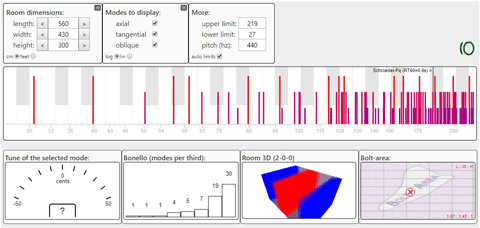ZeDestructor
Active Member
- Joined
- Jul 28, 2019
- Messages
- 119
- Likes
- 68
Hi all,
So, as the title says, thanks to plans for building a new house from the ground up, I have the opportunity to do basically whatever I want for my main computer/gaming/audio/office room, and would like some advice and reading materials on the subject.
Restrictions and properties that are already set in stone:
This is of course quite different from the usual here at ASR, but for those of us who have the opportunity, desigining the room right beats any kind of post-construction upgrades.
So, as the title says, thanks to plans for building a new house from the ground up, I have the opportunity to do basically whatever I want for my main computer/gaming/audio/office room, and would like some advice and reading materials on the subject.
Restrictions and properties that are already set in stone:
- Floor and roof will be reinforced concrete, walls will be cinderblocks with concrete rendering
- There will almost certainly be extensive thermal insulation on at least 5 sides, with a false ceiling. Floor insulation I have no idea right, but I am interested in datacenter-like false-flooring, particularly since I want to put my PC in the dedicated server toom and run long cables to some manner of hole in the floor through a 10-15cm (4-6") pipe (pipe itself will likely be foam-filled once the setup is set, for obvious reasons)
- There will be one or two triple-glazed windows and one or two doors
- The speaker layout will be 7.x.y. Initially using my existing 7.1 set, and then eventually moving to alot of Genelecs
- Listening will be fairly near-field, a consequence of running a triple-screen forcing the front trio close
- Main seating position will be in the centre of the room, or possibly a bit off-centre.
- Budget: in the long-term, unlimited. For now my main concern is getting the room shaped right for the eventual sound treatment and speaker placement, since you can't exactly reshape a room once the concrete is set.
This is of course quite different from the usual here at ASR, but for those of us who have the opportunity, desigining the room right beats any kind of post-construction upgrades.

